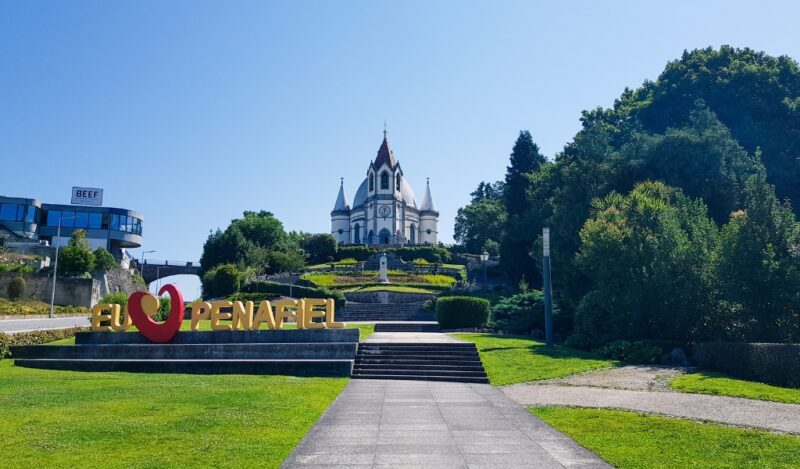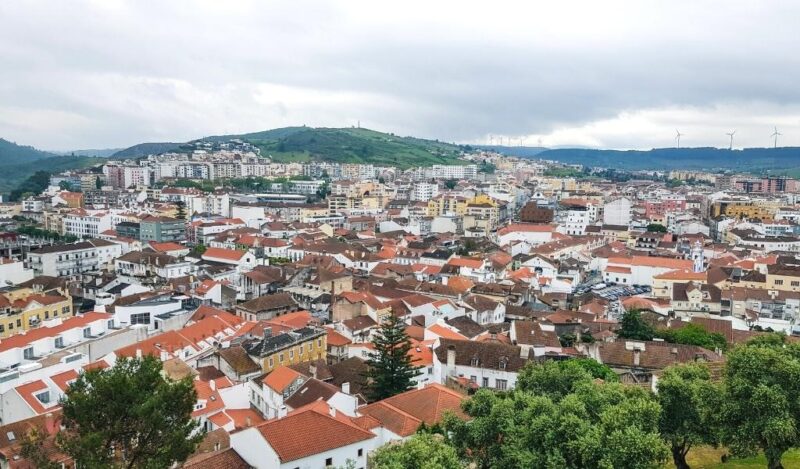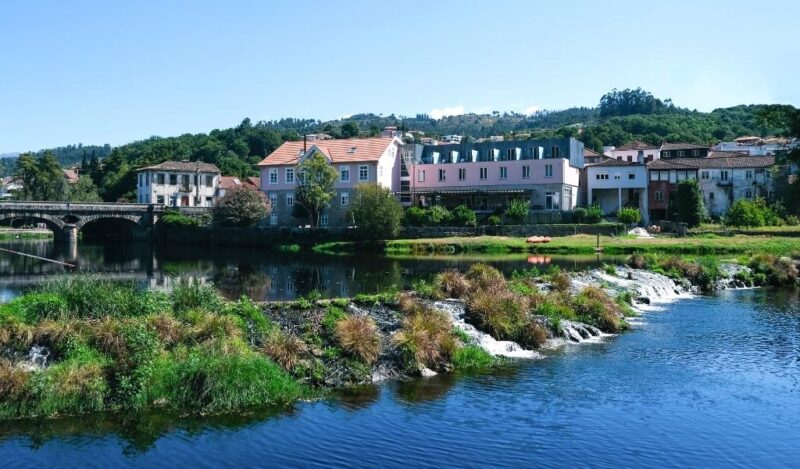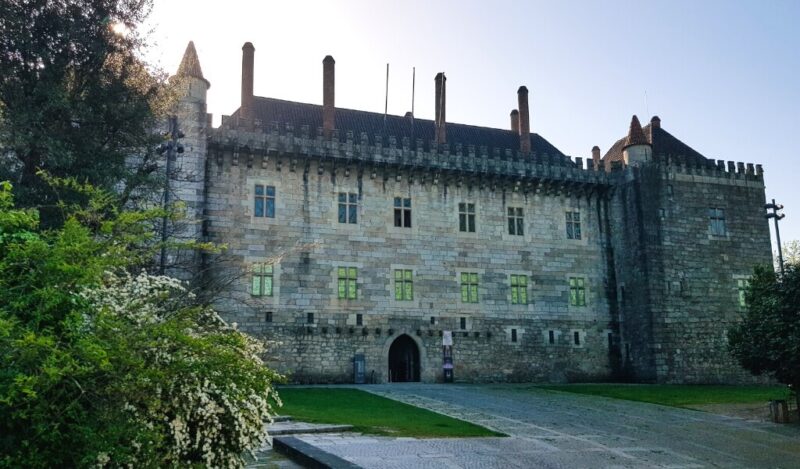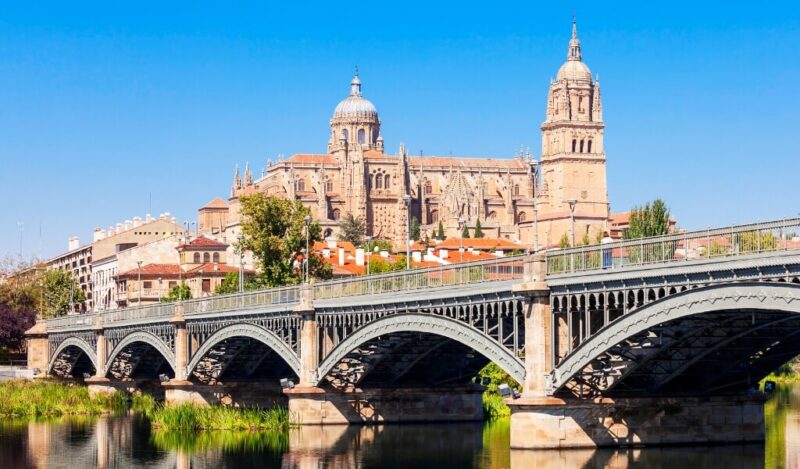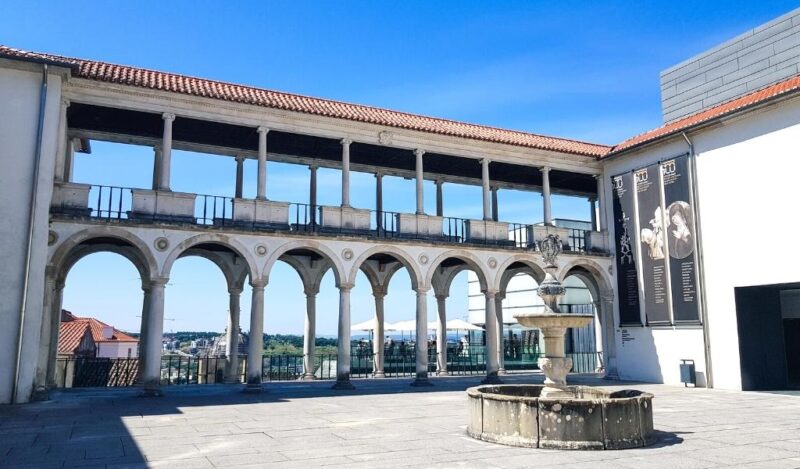Florence (in Italian, Firenze) is one of the most beautiful cities in Europe and a true paradise for art and architecture lovers. Considered the birthplace of the Italian Renaissance, Florence was the workplace of the most renowned masters, such as Giotto di Bondone, Sandro Botticelli, Leonardo da Vinci, Donatello Bardi, Michelangelo Buonarroti, and Raffaello Sanzio – in addition to being the birthplace of Dante Alighieri, one of the greatest poets of all time!
Capital of the famous Tuscany region, Florence is also one of the best places to visit in Italy. Among the several dozen monuments that make up the Historic Center of Florence – which has been a UNESCO World Heritage Site since 1992 – it’s impossible not to mention the Cattedrale di Santa Maria del Fiore (one of the most iconic cathedrals in the world) and the Galleria degli Uffizi (the most important art museum in the country)!
So, do you want to know more about 3 Days In Florence: The Perfect Florence Itinerary? Keep reading!
This post may contain affiliate links, meaning I earn a small commission if you make a purchase, at no additional cost to you. Please read my disclosure & privacy policy for more information.
No time to read now? Pin it for later!

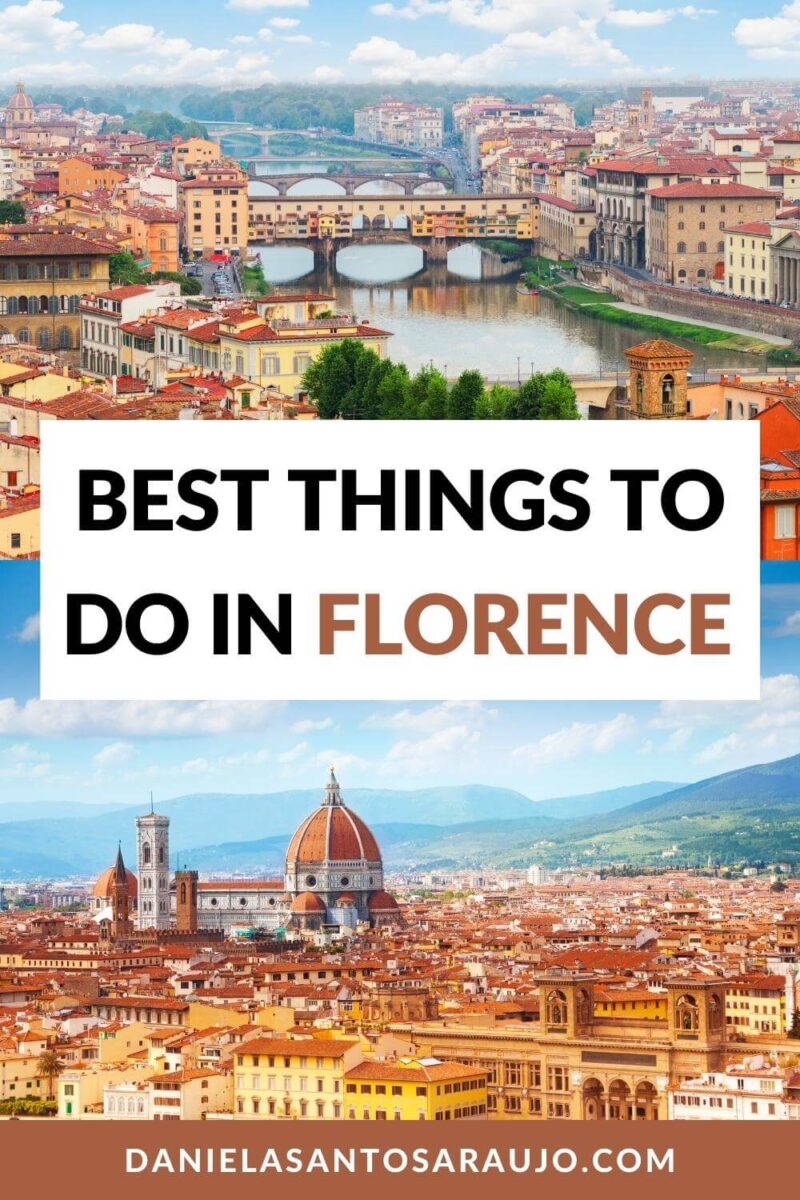
Brief History of Florence
The city of Florence was founded in the Roman Empire (around 59 BC) as a military settlement, but it’s known that this region had already been inhabited by the Etruscans, between the 7th-6th centuries BC. Unfortunately, few archaeological remains from this period have survived to the present day.
At the end of the Middle Ages, Florence began to become one of the main cultural, artistic, and commercial centers in Europe. And this development was consolidated from the first half of the 15th century when the House of Medici came to power.


The Medici were a family of bankers and politicians who ruled Florence and Tuscany for over three hundred years. In addition to their domain and influence in administrative and economic matters, the Medici were patrons of countless architects, poets, painters, sculptors, and musicians.
After the extinction of the Medici dynasty in 1737, Tuscany was integrated into the territories of the Austrian crown. And in 1807, it was annexed by France – a situation that only changed seven years later, with the fall of Napoleon Bonaparte. In 1861, Tuscany became a region of the Kingdom of Italy, with Florence being its capital between 1865 and 1871.
World Heritage
Did you know that the Historic Center of Florence was part of Italy’s third set of inscriptions on the UNESCO World Heritage List? This 5th session of the World Heritage Committee took place in Paris (France), between December 13th and 17th, 1982.
Nowadays, Italy is the country in the world with the most UNESCO sites: it has fifty-nine heritage assets (both cultural and natural) inscribed on the world list of the United Nations Educational, Scientific, and Cultural Organization!
In the meantime, I’ve already had the opportunity to visit eight of them:
- 18th-Century Royal Palace at Caserta with the Park (1997)
- Archaeological Area of Pompei (1997)
- Cinque Terre (1997)
- Historic Center of Florence (1982)
- Historic Center of Naples (1995)
- Historic Center of Rome and the Properties of the Holy See (1980) – Castel Sant’Angelo, Colosseum, Pantheon, Roman Forum and Palatine Hill
- The Porticoes of Bologna (2021)
- Venice and its Lagoon (1987)
Visiting Florence
The city of Florence is served by Florence-Peretola Airport (FLR), which has several connections to other major European cities – making it an even more attractive tourist destination for international travelers. And if you’re already in Italy, then you can reach Florence by train, bus, or car!


In my opinion, the most practical (and pleasant) way to travel around Italy is by train. With direct connections to the capitals of many Italian regions, Florence is around 40 minutes from Bologna (Emilia-Romagna), 1h40 from Rome (Lazio), 1h55 from Milan (Lombardy), 2h10 from Perugia (Umbria), 2h40 from Venice (Veneto), 2h45 from Genoa (Liguria), and 3h from both Naples (Campania) and Turin (Piedmont).
Florence Itinerary – Day 1
Cattedrale di Santa Maria del Fiore (or Duomo di Firenze)
The first of this “3-Day Itinerary in Florence” begins in Piazza del Duomo, with a visit to the most famous monument of this Italian city: the Cattedrale di Santa Maria del Fiore. Built over the old Basilica di Santa Reparata, this cathedral was a project begun by the architect Arnolfo di Cambio in 1296 and continued by Giotto di Bondone in 1334, Andrea Pisano in 1337, and Francesco Talenti in 1349.
When it was consecrated in 1436, the Cathedral of Saint Mary of the Flower was the largest cathedral in Europe and one of the first in a Renaissance style. Among the elements that differentiate it from the others, the magnificent brick dome (designed by Filippo Brunelleschi between 1420 and 1436) stands out. And of course, the tricolor external cladding idealized by Arnolfo di Cambio, with white marble from Carrara, green marble from Prato, and red marble from Siena!


Worldwide known as the Florence Dome (or Duomo di Firenze, in Italian), this cathedral is today one of the largest churches in the world, after other equally iconic religious temples that I’ve had the opportunity to visit (such as Saint Peter’s Basilica in Vatican City; the Cathedral of Seville, in Spain; or the Basilica of the Holy Trinity, in Fátima, Portugal).
The Cattedrale di Santa Maria del Fiore is open every day (except Sundays and holidays), from 10:15 am to 4:30 pm. Entrance is free, although it’s necessary to pay to go up to the dome. The best option is to buy the “Brunelleschi Pass” in advance on the official website of the Florence Duomo, which costs €30 (adults) or €12 (children from 7 to 14 years old) and allows you to visit the five attractions in the Piazza del Duomo:
- Brunelleschi’s Dome
- Giotto’s Bell Tower
- Baptistery of Saint John
- Opera Duomo Museum
- Old Basilica of Santa Reparata
Campanile di Giotto
The Campanile di Giotto is the bell tower of the Cattedrale di Santa Maria del Fiore, almost 85 meters high. And in my opinion, climbing more than 400 steps to enjoy the panoramic views over the Piazza del Duomo is one of the best things to do in Florence!
Like the Dome in Florence, Giotto’s Bell Tower was built using the same polychrome marble from the Tuscan region. The design was charge of Giotto di Bondone and the works began in 1334, but the artist died three years later and only had time to complete the base of the tower.
Therefore, the project passed into the hands of Andrea Pisano, who followed the ideas and original concept of his predecessor. However, construction had to be stopped because of the Black Death pandemic, and when it resumed in the late 1340s, Francesco Talenti was already overseeing the works.


Giotto’s Bell Tower was completed in 1359 and today is considered a masterpiece of Florentine Gothic architecture. One of its most fascinating details is the dozens of decorative statues and reliefs – although the originals were kept in the Museo dell’Opera del Duomo (for conservation purposes) and replaced by replicas.
The Campanile di Giotto is open every day, from 8:15 am to 7:45 pm. On the official website of the Florence Duomo, you have the option to buy the same “Brunelleschi Pass”, or the “Giotto Pass” for €20 (adults) or €7 (children from 7 to 14 years old), which gives you access to four monuments of the Piazza del Duomo:
Battistero di San Giovanni
The Battistero di San Giovanni is the third and last monument located in the Piazza del Duomo (and in the Piazza San Giovanni), which I decided to include in this “3-Day Itinerary in Florence”. Interestingly, it’s one of the oldest churches in Florence, as its origins date back to the 4th century. In fact, for several centuries, Florentines believed that it was a pagan temple founded by the Romans!
As the name implies, the “baptistery” (or “baptistry”) is the place where Christian baptisms are carried out and can be incorporated into a church or be a completely independent structure – as is the case of the Baptistery in Florence. The octagonal-shaped religious building you see today was consecrated in 1059, but its construction lasted until the 16th century.


Besides its white and green marble cladding, the Baptistery of Saint John is famous for the three sets of bronze doors, created by Andrea Pisano and Lorenzo Ghiberti (the latter, the author of the “Porte del Paradiso” – the name given by Michelangelo to the doors facing the cathedral). With colossal dimensions and richly decorated with relief sculptures, the original examples can be admired at the Museo dell’Opera del Duomo!
The Battistero di San Giovanni is open every day from 9 am to 7:45 pm. Once again, you can buy the “Brunelleschi Pass” or the “Giotto Pass” on the official website of the Florence Duomo – although you have the “Ghiberti Pass” at €15 (adults) or €5 (children from 7 to 14 years old), which allows you to visit three monuments in the Piazza del Duomo:
Palazzo Vecchio
Built between the end of the 13th century and the beginning of the 14th century, the Palazzo Vecchio has been the administrative seat of Florence for over 700 years. Originally nicknamed Palazzo dei Priori, this fortified palace is situated in Piazza della Signoria – a square that also houses dozens of sculptures, including:
- Statua Equestre di Cosimo I de’ Medici, a bronze statue by Giambologna
- Fontana del Nettuno, made in marble and bronze, with a central statue by Bartolomeo Ammannati
- “Ercole e Caco”, a marble sculpture by Baccio Bandinelli
- “Marzocco”, a sculpture in pietra serena by Donatello (it’s a replica, as the original is on display at the Museo Nazionale del Bargello)
- “Giuditta e Oloferne”, a bronze statue also by Donatello (it’s also a copy, but you can see the original in the Sala dei Gigli of the Palazzo Vecchio)
- “David”, a marble sculpture by Michelangelo (logically, it’s a replica of the masterpiece preserved in the Galleria dell’Accademia)


The Palazzo Vecchio was designed by Arnolfo di Cambio and was intended to accommodate the Signoria di Firenze (that is, the magistracy and government of the city). Over the centuries, the building has undergone several expansions and interventions, including name changes to Palazzo Ducale and Palazzo della Signoria.
The current designation of “Old Palace” was adopted in 1565 when the Medici Family moved into the newly built Palazzo Pitti. The Corridoio Vasariano also dates from this time, the passage designed by Giorgio Vasari and that connects the Palazzo Vecchio to the Palazzo Pitti, crossing monuments such as the Galleria degli Uffizi and the Ponte Vecchio.
The Museo di Palazzo Vecchio is open every day from 9 am to 7 pm (except on Thursdays, which closes at 2 pm). Torre di Arnolfo has the same opening hours, but from Friday to Wednesday it closes at 5 pm. As for tickets, they cost €12.5 (adults) or €10 (young people aged between 18 and 25 and university students) and can be purchased on the official website of the Florentine Civic Museums.
Galleria degli Uffizi
In 1560, Cosimo I de’ Medici commissioned an office building from Giorgio Vasari (the Palazzo degli Uffizi or “Office Palace”), to reunite the city’s magistrates, who then scattered throughout Florence. However, his “real” intention was to control them directly from the Palazzo della Signoria, situated right next door.
The Galleria degli Uffizi (i.e., Uffizi Gallery) was one of the first museums in Modern History, as it first opened to the public in 1765. Even so, it only officially assumed “museum” status about a century later. Today, it’s not only one of the most popular attractions in Florence but also one of the most visited art museums in the world!

The Galleria degli Uffizi is open from Tuesday to Sunday from 8:15 am to 6:30 pm. The entrance fee is €12, but there’s a reduced rate of €2 for all young people between 18 and 25 years old, who are citizens of the European Union. Plus, admission is free for anyone under 18!
Read my complete guide to the Uffizi Gallery, a must-see tourist attraction on any Florence itinerary!!
Ponte Vecchio
To end this first day of a “3-Day Itinerary in Florence”, I chose one of the busiest places in the beautiful Italian city: the Ponte Vecchio (or “Old Bridge”). Designed by Taddeo Gaddi, this arched bridge was built in 1345 after the ancient Roman bridge was destroyed by floods.

In addition to being one of the most tourist attractions in Florence, the Ponte Vecchio is very popular with more “wealthy” visitors. This is because the bridge deck is home to a series of luxury stores, the vast majority of which are jewelry shops.
Florence Itinerary – Day 2
Galleria dell’Accademia
The Galleria dell’Accademia di Firenze (or Gallery of the Academy of Florence) is one of the most important art museums in Italy, with a collection of works from the beginning of the 14th century to the end of the 19th century.
The Accademia Gallery was founded by Emperor Leopold II (the then Grand Duke of Tuscany) in 1874 and aimed to promote the teaching of art and direct contact between these students and the works of art.

In addition to “David” (Michelangelo’s masterpiece), it’s possible to admire numerous paintings and sculptures by other Tuscan artists, especially from the Renaissance period. And in 2001, a collection of musical instruments opened, with examples by Nicola Amati, Antonio Stradivari, and Bartolomeo Cristofori.
The Galleria dell’Accademia is open from Tuesday to Sunday from 9 am to 6:45 pm. As for tickets, the prices are similar to those of the Galleria degli Uffizi and are also subject to an additional fee of €4 when purchased on the official website of the Florentine State Museums.
Palazzo Medici Riccardi
As you may have noticed, this “3-Day Itinerary in Florence” focuses on the three most important types of historic buildings in this city: churches, palaces, and museums. And the Palazzo Medici Riccardi is another one of them, as this renaissance palace was owned by the Medici Family, before being bought and expanded by the Riccardi Family!
The construction of the palace was commissioned by Cosimo de Medici (the founder of the powerful dynasty) in 1444 and was in charge of the architect Michelozzo Michelozzi. But the family home was confiscated by the Repubblica Fiorentina in 1494, the year the Medici were expelled from the city.

In 1659, after the Medici family had returned to power, Ferdinando II de’ Medici sold the mansion to Marquis Gabriello Riccardi. And this other family of bankers quickly changed its architectural structure and decorative elements, seeking to expand the palace and modernize it in the Baroque style.
The Palazzo Medici Riccardi is open every day (except on Wednesdays) from 9 am to 7 pm. And like most monuments in Italy, ticket prices fall into three categories: €7 (adults), €4 (young people between 18 and 25 years old and university students), and free entry (under 18).
Basilica di San Lorenzo
The Basilica di San Lorenzo is one of the many basilicas that exist in Florence. I mean, when I was in Florence, I saw/visited seven: Basilica di San Marco, Basilica della Santissima Annunziata, Basilica di San Lorenzo, Basilica di Santa Maria Novella, Basilica di Santa Croce, Basilica di San Miniato al Monte, and the old Basilica di Santa Reparata !
Although there was a small church on this site, founded at the end of the 4th century, the current basilica dates from the 15th century. Designed by Filippo Brunelleschi, the works began in 1419 and lasted until 1460, already under the supervision of the Florentine architect Antonio Manetti.

The Catholic temple is another of the buildings built by the Medici, although this one has special importance. This is because the Basilica of St Lawrence houses the Cappelle Medicee (the family mausoleum), which includes two remarkable buildings: the Sagrestia Nuova (by Michelangelo) and the Cappella dei Principi (by Matteo Nigetti)!
The Basilica di San Lorenzo is open every day (except on Sundays), from 10:30 am to 4 pm. As for tickets, they cost €6 (Basilica) or €8.50 (Basilica, Medici Chapels, Cloister, and Medicea Laurenziana Library), and children under 12 don’t pay admission.
Basilica di Santa Maria Novella
If you arrived in Florence by train, then you must have seen the Basilica di Santa Maria Novella, as it’s just a few meters from the Stazione di Firenze Santa Maria Novella (the central railway station). Built between 1246 and 1360 in Gothic and Renaissance style, this Dominican church was designed by the friars of the Order of Saint Dominic!

The Basilica di Santa Maria Novella is open every day, although with different opening hours: from 9 am to 5:30 pm (from Monday to Thursday), from 11 am to 5:30 pm (on Fridays), from 9 am to 5 pm (on Saturdays), and from 1 pm to 5 pm (on Sundays and holidays). The ticket costs €5 (adults) or €3.50 (children and young people aged 5 to 18, and over 65 years old).
Mercato Centrale di Firenze
If you thought I could write an itinerary in an Italian city without mentioning food, think again! The Mercanto Centrale di Firenze doesn’t have historical importance comparable to the other monuments in this article, but it’s one of the best places in Florence to taste the delicious cuisine of Tuscany and Italy!
Interestingly, Florence’s Central Market was designed by Giuseppe Mengoni (the same architect who designed the iconic Galleria Vittorio Emanuele II in Milan). The iron and glass building dates from 1874, but its current appearance is the result of a long rehabilitation campaign to celebrate its 140th Anniversary (in 2004).
The Mercato Centrale di Firenze is open every day from 10 am to 12 am. In addition to the numerous stalls selling fresh products on the ground floor, you can find restaurants, taverns, pizzerias, ice cream shops, cafes, and bars on the upper floor. I tried a “panini al tartufo” at Il Tartufo by Luciano Savini and I have to confess that it was divine!
Florence Itinerary – Day 3
Basilica di Santa Croce
My last day in Florence is dedicated to Oltrarno (the neighborhood on the south bank of the River Arno), although there’s one more must-see place on the north bank: the Basilica di Santa Croce. Located in the Piazza di Santa Croce, this monument is an authentic “Pantheon of Italian Masters”. After all, this is where figures like Lorenzo Ghiberti, Niccolò Machiavelli, Michelangelo Buonarotti, Galileo Galilei, or Gioachino Rossini are buried!
The history of the Basilica of the Holy Cross dates back to 1294 and its design is attributed to Arnolfo di Cambio. And despite having been consecrated in 1442, the works went on for centuries, with the addition of several chapels and the construction of the bell tower in the mid-19th century. Today, it’s the largest Franciscan church in the world.


The Basilica di Santa Croce is open every day (except on Tuesdays) from 9:30 am to 5:30 pm (Monday to Saturday) or from 1 pm to 5:30 pm (on Sundays and holidays). Tickets cost €8 (adults) or €6 (12 to 17-year-olds and university students). If you want, you can buy tickets in advance on the official website of the Basilica of the Holy Cross.
Palazzo Pitti
When you leave the Basilica di Santa Croce towards the Palazzo Pitti, make sure you cross the Arno river through the Ponte alle Grazie – this way, you have panoramic views of the Ponte Vecchio! Now, as far as is known, the Palazzo Pitti was commissioned by Filippo Brunelleschi in 1458, by the Florentine banker Luca Pitti.
However, its “fame” only emerged a century later, when it became the official residence of the Medici after they had decided to leave the Palazzo Vecchio. And even though the Medici dynasty was extinct in 1737, the building maintained its status as a “royal palace”, as it still housed the houses of Habsburg-Lorraine (1737-1801 and 1814-1860), Bourbóon-Parma (1801-1807), Bonaparte (1807-1814) and Savoy (1860-1871)!

Currently, the Pitti Palace is the main tourist attraction in the Oltrarno neighborhood, being divided into a series of museums: the Tesoro dei Granduchi (on the ground floor); the Galleria Palatina, Cappella Palatina, Museo delle Icone Russe, and the Appartamenti Imperiali and Reali (on the first floor); and the Galleria d’Arte Moderna and the Museo della Moda e del Costume (on the second floor).
The Palazzo Pitti is open from Tuesday to Sunday from 8:15 am to 6:30 pm. As for tickets, they cost €10 (adults) or €2 (young people aged between 18 and 25, who are citizens of the European Union), and give access to all the collections of this Renaissance palace. As the monument is one of the most popular in Florence, I recommend that you buy tickets in advance on the official website of the Florentine State Museums.
Giardino di Boboli
The Palazzo Pitti may be the largest museum complex in Florence, but the Giardino di Boboli is second to none in terms of sheer size and spectacularity! Designed by the Medici family behind their “new” official residence, this set of gardens originated the concept of “Giardino all’italiana” (that is, “Italian Garden”) and became a model for other European courts.
The Boboli Gardens are adorned with dozens of classical and Renaissance statues, artificial grottoes, and monumental fountains. In addition, they’re punctuated by other structures such as the Anfiteatro di Boboli (with an Egyptian obelisk), the Kaffeehaus (one of the few examples of Rococo architecture in Tuscany), and the Lemon House (built by Zanobi del Rosso between 1777-78).
The Giardino di Boboli is open every day from 8:15 am. However, the closing time depends on the month of the year: 6:30 pm (in January, February, November, and December), 5:30 pm (in March and October, in wintertime), 6:30 pm (from March to May and in September and October, in summertime), and 7 pm (from June to August). The ticket costs €6 (adults) or €2 (young people aged between 18 and 25, who are citizens of the European Union), and can be purchased on the official website of the Florentine State Museums.
Piazzale Michelangelo
Watching the sunset in the historic center of this Italian city from the Piazzale Michelangelo has got to be one of the best things to do in Florence (and one of the most indescribable too). Designed by the architect Giuseppe Poggi in 1869, this square has the best panoramic views I’ve ever encountered in my travels in Europe!

Michelangelo Square dates back to when Florence was the capital of Italy and much of the city was being renovated. Dedicated to the genius of painting, sculpture, and architecture, this wide terrace houses replicas of his works (including a bronze statue of “David”) and a Renaissance loggia, converted into a restaurant.
Map of the Florence Itinerary
Share this blog post on your social media!
More Posts about Italy
4 Days In Rome: The Perfect Rome Itinerary
Roman Forum And Palatine Hill: Best Tips For Visiting In 2024
Colosseum: Best Tips For Visiting In 2024
More Posts about Travel Itineraries
1 Day In Penafiel: The Perfect Penafiel Itinerary
1 Day In Torres Vedras: The Perfect Torres Vedras Itinerary
2 Days In Arcos De Valdevez: The Perfect Arcos De Valdevez Itinerary
More Posts about World Heritage
Palace Of The Dukes Of Braganza: Best Tips For Visiting In 2024
World Heritage In Castile And León (2024)
Machado De Castro National Museum: Best Tips For Visiting In 2024
What Photography Gear Do I Use?
- Camera Body: Fujifilm X-T4 Mirrorless
- Camera Lens: Fujinon XF 18-55 mm F2.8-4 R LM OIS
- Tripod: Manfrotto Compact Action
- Small Tripod: Manfrotto PIXI Mini
- Smartphone Adaptor: Manfrotto PIXI Clamp
- Memory Card: SanDisk 128GB Extreme PRO SDXC




